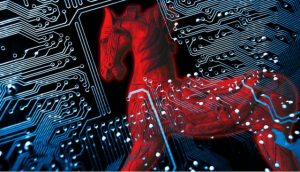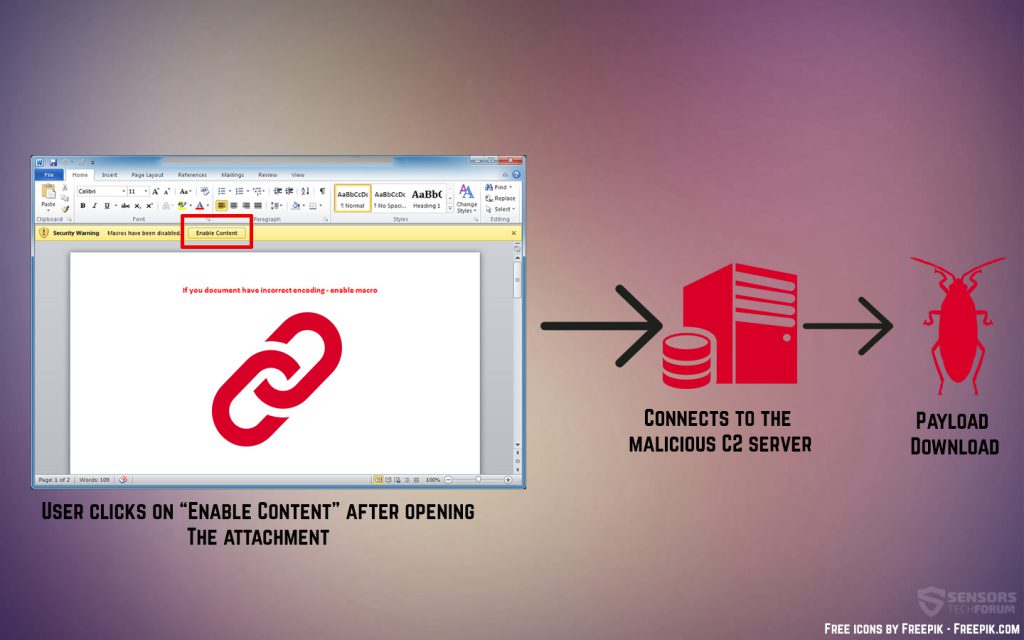 This article has been created in order to explain what is the Trojan.Fakeinstall malware and how to remove it completely from your computer.
This article has been created in order to explain what is the Trojan.Fakeinstall malware and how to remove it completely from your computer.
A new Trojan horse which opens a backdoor on the computer, infected by it and performs various types of malicious activities has been detected by malware researchers. The Trojan’s primary purpose is to enter your computer while remaining unnoticeable. The virus may also download other files on your computer, update itself and even infect your PC with other malware as well. If you believe your computer has been infected by the Trojan.Fakeinstall, recommendations are to read this article in order to learn how to remove the Trojan.Fakeinstall from your computer.

Threat Summary
| Name | Trojan.Fakeinstall |
| Type | Trojan Horse |
| Short Description | Aims to slither in your PC undetected and then begin to download various malicious files and steal data. |
| Symptoms | Multiple different files being created and well hidden in Windows. The Trojan may also download a sidebar for your desktop or web browser. |
| Distribution Method | Via malicious e-mail attachments or malicious web links. |
| Detection Tool |
See If Your System Has Been Affected by malware
Download
Malware Removal Tool
|
User Experience | Join Our Forum to Discuss Trojan.Fakeinstall. |

Trojan.Fakeinstall – How Does It Infect
The main method of infection, used by the Trojan.Fakeinstall threat is to be spread via a malicious e-mail attachment or web link. Cyber-criminals are very cunning and continue to create more and more advanced fake spam e-mails to infect victims, similar to what the infection graphic of activities displays underneath:
Once the victim cdownloads a malicious document from the e-mail, believing it is an important document of some sort, the computer on which the file is opened becomes compromised after the victim enables macros in it by clicking “Enable Content”. The Trojan.Fakeinstall uses the following vulnerabilities to infect your PC undetected:
- Microsoft Office CVE-2018-0802 Memory Corruption Exploit.
- Microsoft Office CVE-2017-11882 Memory Corruption Exploit.

Trojan.Fakeinstall Sidebar – Analysis
Once the Trojan.Fakeinstall infects a computer, researchers at Symantec report that it drops the following files in the victim PC:
→ %SystemDrive%\ProgramData\Apple\Update\sidebar.exe
%SystemDrive%\ProgramData\Apple\Update\wab32res.dll
%SystemDrive%\ProgramData\Apple\Update\secn.tsp
%SystemDrive%\ProgramData\Oracle\wab.exe
%SystemDrive%\ProgramData\Oracle\wab32res.dll
It’s primary malicious executable is known as sidebar.exe, which suggests that the malware may come together with a sidebar or some sort of program in proximity to a sidebar.
After Trojan.Fakeinstall has dropped it’s payload, the malware begins to add Windows Registry value strings with data in them to run the sidebar.exe and wab.exe malicious files automatically when you log in Windows. The sub-keys and the strings are reported by researchers to be the following
→ HKEY_CURRENT_USER\Software\Microsoft\Windows\CurrentVersion\Run\”appwin” = “%SystemDrive%\ProgramData\Oracle\wab.exe”
HKEY_CURRENT_USER\Software\Microsoft\Windows\CurrentVersion\Run\”side” = “%SystemDrive%\ProgramData\Apple\Update\sidebar.exe”
The Trojan.Fakeinstall is the type of infection which opens up a backdoor and connects to several remote hosts that have completely random names, like A-Z, a-z, 0-9 and end in .com plus .today domain extensions.
The primary activity of the Trojan.Fakeinstall is to download executables and other malicious files on your computer as a result of connecting to those domains. But besides this, the Trojan may also have other features added to it, such as:
- To track your typed keys via a keylogger.
- To take screenshots on your PC.
- To obtain your important passwords if you have saved them.
- To steal files directly from your hard drive.
- To install other malware on your PC.
- To cause browser redirects and connect you to different websites.

Remove Trojan.Fakeinstall Fully from Your PC
In order to fully get rid of the Trojan.Fakeinstall malware, it is advisable to follow the removal instructions underneath this article. They are specifically created In order to help you by showing how to remove the Trojan.Fakeinstall either manually or automatically. If you lack malware removal experience security researchers strongly advise to perform the removal process automatically and download an advanced anti-malware software which will scan your PC and remove any malicious files that may be downloaded by Trojan.Fakeinstall at a click of a button.
Preparation before removing Trojan.Fakeinstall.
Before starting the actual removal process, we recommend that you do the following preparation steps.
- Make sure you have these instructions always open and in front of your eyes.
- Do a backup of all of your files, even if they could be damaged. You should back up your data with a cloud backup solution and insure your files against any type of loss, even from the most severe threats.
- Be patient as this could take a while.
- Scan for Malware
- Fix Registries
- Remove Virus Files
Step 1: Scan for Trojan.Fakeinstall with SpyHunter Anti-Malware Tool



Step 2: Clean any registries, created by Trojan.Fakeinstall on your computer.
The usually targeted registries of Windows machines are the following:
- HKEY_LOCAL_MACHINE\Software\Microsoft\Windows\CurrentVersion\Run
- HKEY_CURRENT_USER\Software\Microsoft\Windows\CurrentVersion\Run
- HKEY_LOCAL_MACHINE\Software\Microsoft\Windows\CurrentVersion\RunOnce
- HKEY_CURRENT_USER\Software\Microsoft\Windows\CurrentVersion\RunOnce
You can access them by opening the Windows registry editor and deleting any values, created by Trojan.Fakeinstall there. This can happen by following the steps underneath:


 Tip: To find a virus-created value, you can right-click on it and click "Modify" to see which file it is set to run. If this is the virus file location, remove the value.
Tip: To find a virus-created value, you can right-click on it and click "Modify" to see which file it is set to run. If this is the virus file location, remove the value.Step 3: Find virus files created by Trojan.Fakeinstall on your PC.
1.For Windows 8, 8.1 and 10.
For Newer Windows Operating Systems
1: On your keyboard press + R and write explorer.exe in the Run text box and then click on the Ok button.

2: Click on your PC from the quick access bar. This is usually an icon with a monitor and its name is either “My Computer”, “My PC” or “This PC” or whatever you have named it.

3: Navigate to the search box in the top-right of your PC's screen and type “fileextension:” and after which type the file extension. If you are looking for malicious executables, an example may be "fileextension:exe". After doing that, leave a space and type the file name you believe the malware has created. Here is how it may appear if your file has been found:

N.B. We recommend to wait for the green loading bar in the navigation box to fill up in case the PC is looking for the file and hasn't found it yet.
2.For Windows XP, Vista, and 7.
For Older Windows Operating Systems
In older Windows OS's the conventional approach should be the effective one:
1: Click on the Start Menu icon (usually on your bottom-left) and then choose the Search preference.

2: After the search window appears, choose More Advanced Options from the search assistant box. Another way is by clicking on All Files and Folders.

3: After that type the name of the file you are looking for and click on the Search button. This might take some time after which results will appear. If you have found the malicious file, you may copy or open its location by right-clicking on it.
Now you should be able to discover any file on Windows as long as it is on your hard drive and is not concealed via special software.
Trojan.Fakeinstall FAQ
What Does Trojan.Fakeinstall Trojan Do?
The Trojan.Fakeinstall Trojan is a malicious computer program designed to disrupt, damage, or gain unauthorized access to a computer system.
It can be used to steal sensitive data, gain control over a system, or launch other malicious activities.
Can Trojans Steal Passwords?
Yes, Trojans, like Trojan.Fakeinstall, can steal passwords. These malicious programs are designed to gain access to a user's computer, spy on victims and steal sensitive information such as banking details and passwords.
Can Trojan.Fakeinstall Trojan Hide Itself?
Yes, it can. A Trojan can use various techniques to mask itself, including rootkits, encryption, and obfuscation, to hide from security scanners and evade detection.
Can a Trojan be Removed by Factory Reset?
Yes, a Trojan can be removed by factory resetting your device. This is because it will restore the device to its original state, eliminating any malicious software that may have been installed. Bear in mind, that there are more sophisticated Trojans, that leave backdoors and reinfect even after factory reset.
Can Trojan.Fakeinstall Trojan Infect WiFi?
Yes, it is possible for a Trojan to infect WiFi networks. When a user connects to the infected network, the Trojan can spread to other connected devices and can access sensitive information on the network.
Can Trojans Be Deleted?
Yes, Trojans can be deleted. This is typically done by running a powerful anti-virus or anti-malware program that is designed to detect and remove malicious files. In some cases, manual deletion of the Trojan may also be necessary.
Can Trojans Steal Files?
Yes, Trojans can steal files if they are installed on a computer. This is done by allowing the malware author or user to gain access to the computer and then steal the files stored on it.
Which Anti-Malware Can Remove Trojans?
Anti-malware programs such as SpyHunter are capable of scanning for and removing Trojans from your computer. It is important to keep your anti-malware up to date and regularly scan your system for any malicious software.
Can Trojans Infect USB?
Yes, Trojans can infect USB devices. USB Trojans typically spread through malicious files downloaded from the internet or shared via email, allowing the hacker to gain access to a user's confidential data.
About the Trojan.Fakeinstall Research
The content we publish on SensorsTechForum.com, this Trojan.Fakeinstall how-to removal guide included, is the outcome of extensive research, hard work and our team’s devotion to help you remove the specific trojan problem.
How did we conduct the research on Trojan.Fakeinstall?
Please note that our research is based on an independent investigation. We are in contact with independent security researchers, thanks to which we receive daily updates on the latest malware definitions, including the various types of trojans (backdoor, downloader, infostealer, ransom, etc.)
Furthermore, the research behind the Trojan.Fakeinstall threat is backed with VirusTotal.
To better understand the threat posed by trojans, please refer to the following articles which provide knowledgeable details.














